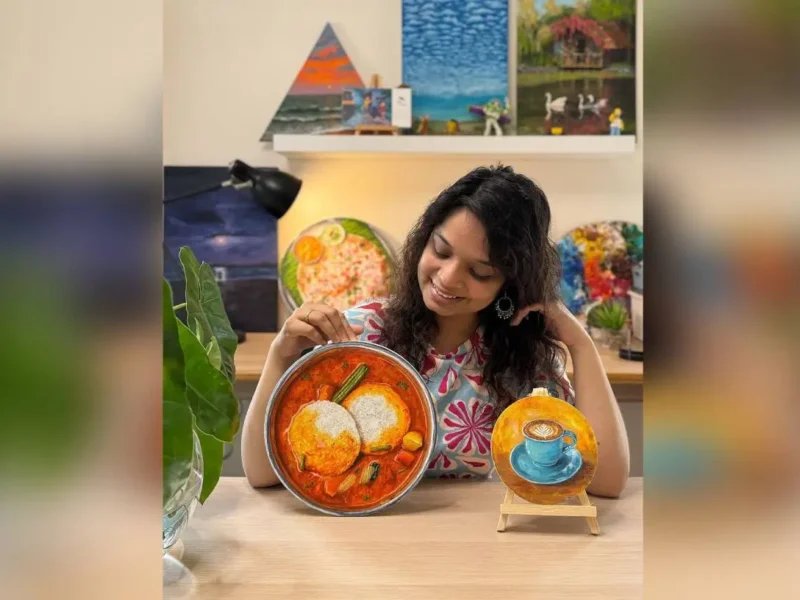
‘The King of Curry’: ‘Celebrity’ Chef Ranji Smile Introduced Americans to Indian Cuisine in 1899
Photo of the main entrance of New York’s Sherry’s restaurant in 1899 where Indian chef J. Ranji Smile introduced Americans to authentic India food for the first time. (James R. Osgood and Company, Boston/Wikimedia Commons photo)
India-West Staff Reporter
Food enthusiasts and others are only now learning about Ranji Smile, one of the first celebrity chefs in the U.S. who gave a taste of authentic Indian food to Americans for the first time when he arrived here from India via London in 1899.
Dubbed by several American publications at the time as ‘The King of Curry,’ the young Muslim chef from Karachi (then in India) captivated Americans when he began cooking Indian dishes at Sherry’s restaurant in New York. According to various accounts, before arriving here, he worked at Cecil Hotel in London where he impressed the owner of Sherry’s, Louis Sherry, with his culinary skills, following which he brought Smile, and his young English wife, to New York in 1899.
He was given full autonomy over the kitchen at Sherry’s, creating delectable dishes such as Kalooh Sherry, Murghi Rain, Muskee Sindh, Curry of Chicken Madras, Indian Bhagi Topur and Bombay Duck.
Smile, also known as Joe Ranji Smile, or Prince Ranji Smile, was also equally famous for his good looks. An article in the New York Letter at the time described him as having “clear dark skin, brilliant black eyes, smooth black hair and the whitest of teeth” and also noted how “women (were) going wild over him.”
He seemed aware that women swooned over him. The publication quoted him as saying, “If the women of America will but eat the food I prepare, they will be more beautiful than they as yet imagine. The eye will grow lustrous, the complexion will be yet so lovely, and the figure like unto those of our beautiful Indian women.”
He attributed his good looks to the “careful way we eat in India” and promised to teach American women how to make such food.
Elaborating upon what it was like to eat food prepared by Smile – who believed in “simmering and not boiling” to retain the flavor – at Sherry’s, the New York Letter journalist said, “The fancy for curries…has taken possession of everyone who has eaten them. You take a seat at one of the dainty tables, look over the Indian menu with a sort of fear and trembling of what’s to come, with a delightful uncertainty pervading your soul.”
According to Edible Brooklyn, like most immigrant cuisine, Smile’s food was exotized by those who were new to it.
By 1907, Smile was touring the country, performing cooking demonstrations at department stores and food halls, and even offering classes to homemakers, it said.
For years, the press went gaga over him. According to the Better India, “Smile essayed the role of an alluring man from a foreign land extremely well. He would come out to serve the customers at Sherry’s dressed in traditional regal attire, spoke in a captivating accent, and introduced America to an authentic, yet poised version of Indian food.”
He would make his own curry powders and pastes that he said suited the palates of all nationalities. Not all Indian food is hot and peppery, he would explain to the customers at Sherry’s.
Smile also put up a great show. He would deftly make a circle on the plate and place a small amount of chicken in the middle of curried rice, all the while telling customers that “his hope is this may be only the first of many dinners he is to serve you.”
The reason Americans do not succeed with curries, he would say, is because they rush through it and “curry everything alike.”
“Oh, your great trouble in this country is the hurried cooking. I almost feel like fainting as I go to some of your great resorts, look into your kitchens, and see the way food is prepared. This gives the dyspepsia, which all my friends here whom I have served say they do not experience when eating of my curries,” he was quoted as saying by The New York Letter.
But for years, the fact that he was an undocumented immigrant went unnoticed.
In 2017, in a public talk, two historians, Sarah Lohman and Vivek Bald, chronicled Smile’s story, and spoke at length about his rise and fall.
Bald is reportedly working on an in-depth biography about Smile.
Smile’s emergence in America happened during an era which was defined by exclusion laws that predominantly barred Asians — despite the intense fascination with India, “the East” and “Oriental” culture, Edible Brooklyn quoted Bald as saying.
In 1904, Smile went to the U.S. Supreme Court to seek citizenship, before the citizenship tests existed, but he was denied because according to the first immigration act of 1790, only a “free white person” was eligible for citizenship.
But when the Immigration Act of 1917 was signed into law, South Asians were officially barred from immigrating to the United States. Smile’s chances of becoming a citizen diminished completely, said Edible Brooklyn.
Lohman said, per Edible Brooklyn, that two months later, Smile, along with every other man of age in the country, had to fill out a draft card to fight in World War I. He didn’t fight and eventually left the U.S. for England after 30 years at the age of 50.
“He wasn’t even a second-class citizen because he couldn’t even be a citizen,” Lohman was quoted as saying.
In a review of Lohman’s book, “Eight Flavours: The Untold Story of American Cuisine,” the New York Post writes: “By the time Smile left the U.S. in 1929, the mark he left on the culinary landscape — especially in NYC — was undeniable.”




